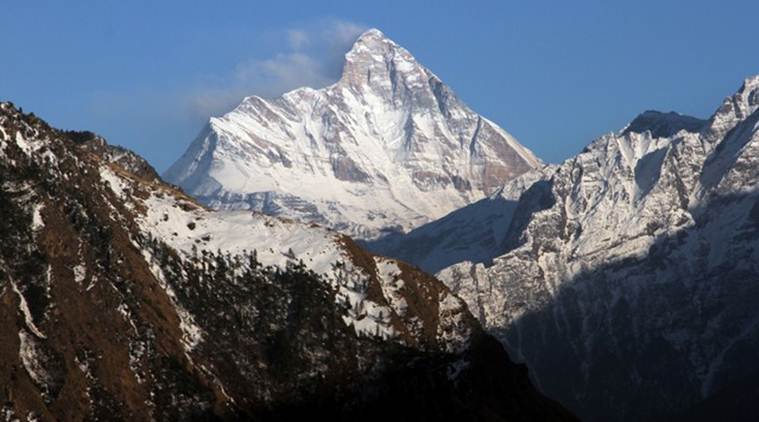 Snow-covered Nanda Devi mountain is seen from Auli town, in the northern Himalayan state of Uttarakhand, India February 25, 2014. REUTERS/Stringer
Snow-covered Nanda Devi mountain is seen from Auli town, in the northern Himalayan state of Uttarakhand, India February 25, 2014. REUTERS/Stringer
Himalayan towns in the Hindu Kush Himalayan region are facing increasing water insecurity due to inadequate urban planning combined with a climate that is changing rapidly, reveals a new study. The study, which covered 13 towns across four countries such as Bangladesh, India, Nepal, and Pakistan, says that the interconnectedness of water availability, waste supply systems, rapid urbanisation and the resultant increase in demand for water (daily and seasonal) are creating water insecurity in HKH towns.
Published in the journal Water Policy, the study also shows that communities are engaged in short-term strategies such as groundwater extraction, which is unsustainable. “This water insecurity is attributed to poor water governance, lack of urban planning, poor tourism management during peak season, and climate-related risks and challenges,” said the study conducted by Kathmandu-based International Centre for Integrated Mountain Development, which focuses on the Hindu Kush Himalayan region.
Also Read: Climate change in Spiti: Water crisis engulfs world’s ‘highest’ village
The study forecasts that while only 3 per cent of the total HKH population lives in larger cities and 8 per cent in smaller towns, at least 50 per cent of the total HKH population will be living in cities by 2050 which will put tremendous pressure on water resources.
According to the study, the water demand-supply gap in eight of the surveyed towns is 20 to 70 per cent. “There is a high dependence on springs (ranging between 50 per cent and 100 per cent) for water supply in three-fourths of the urban areas. Under current trends, the demand-supply gap may double by 2050. A holistic water management approach that includes springshed management and planned adaptation is therefore paramount for securing safe water supply in the urban Himalaya. Along with springshed management, other options could be explored in the wake of rising water demand and use,” said the study.
Increasing urbanisation and climate change, the study opines, are ‘two big stressors that are affecting the biophysical environment of the urban Himalaya’. To alleviate these issues, the study some ways to address water insecurity in HKH region. “First, water needs to be sustainably sourced to bridge the gap between supply and demand,” it said. It suggests increasing budgetary allocations for reviving and protecting springs and diversifying water resources given high dependence on springs for water needs.
It also advocates for efficient water governance and management and urges the need to consider issues and services beyond water utilities.
Climate change and its impacts have always been biased against the poor and marginalised, who have the least to contribute to the problem. To address this aspect of the challenge, the study recommends an equitable distribution of water. “The poor and marginalized are most affected when water supply dwindles. Many cities are faced with the challenge of providing access to safe water for the poor, especially during the dry season when supply dwindles,” the study indicates.